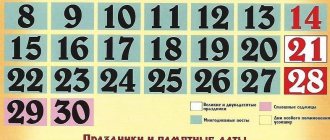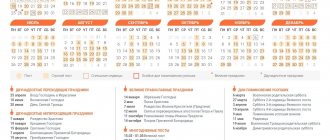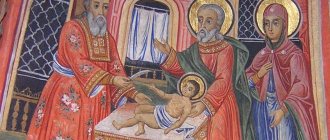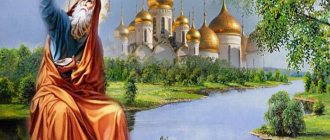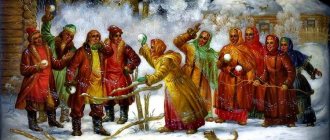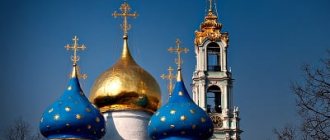Easter, the Holy Resurrection of Christ, is the most important Christian holiday. For believers, this is the victory of life over death or good over evil.
Easter Day is a moving event; in 2022, Orthodox Christians celebrate it on April 24, while Catholics celebrate it on April 17. The celebration was established in honor of the resurrection of Jesus Christ from the dead after the crucifixion. The event is the center of biblical history and the basis of Christianity.
According to the Apostle Paul, 1 Corinthians. 15:14
and if Christ is not risen, then our preaching is in vain, and your faith is in vain.
Why is Easter on different days every year?
The date of Easter is determined by the lunisolar calendar and is celebrated at a different time every year. The calculation method is called Paschalia, where the general rule is:
Easter is celebrated on the first Sunday after the spring full moon, which occurs no earlier than the spring equinox.
Both Paschals: the Alexandrian (Orthodox) according to the Julian calendar and the Gregorian (Catholic) according to the Gregorian calendar are based on this principle.
By full moon and equinox we do not mean astronomical phenomena, but calculated dates. The Easter full moon (day of the 14th moon) is taken from the lunar phase schedule calculated based on the Metonic cycle. The spring equinox, included in Easter, for the northern hemisphere is March 21.
For the Orthodox, the celebration falls between April 4 and May 8. The last time the earliest Easter was celebrated was in 2010, and the latest in 1983.
For Catholics and most Protestants, the date of Easter varies from March 25 (last in 1951) to April 25 (1943).
Periodically, all faiths celebrate the “Triumph of Celebrations” together, as was the case in 2021, and the next time will be in 2025.
Why is the date of the holiday different every year?
Many people are concerned about the following question: why is the celebration of Easter moved to different days from year to year? After all, there is a historically fixed date for this event. And this happened due to the impossibility of reaching an agreement among representatives of various churches. Some celebrated according to the calendar approved by Julius - the Julian, others by Pope Gregory - the Gregorian.
This explains why for adherents of Catholicism and followers of Christianity, Easter dates do not coincide and almost never intersect. Catholic Easter in forty-five percent of cases is celebrated 7 days earlier than Christian Easter. But at the same time, there is never a gap of 3 and two weeks between them. The possibility of such a coincidence is only 2% of cases in two weeks and 20% of cases in five weeks.
Easter celebration
Easter dates by year from 2007 to 2028
| Year | Catholic Easter | Orthodox Easter |
| 2007 | April 8 | April 8 |
| 2008 | March 23 | April 27 |
| 2009 | 12th of April | April 19 |
| 2010 | April, 4 | April, 4 |
| 2011 | April 24 | April 24 |
| 2012 | April 8 | April 15 |
| 2013 | March 31 | 5 May |
| 2014 | 20 April | 20 April |
| 2015 | 5th of April | 12th of April |
| 2016 | March 27 | 1st of May |
| 2017 | April 16 | April 16 |
| 2018 | April 1 | April 8 |
| 2019 | April 21 | April 28 |
| 2020 | 12th of April | April 19 |
| 2021 | April, 4 | May 2 |
| 2022 | April 17 | April 24 |
| 2023 | April 9 | April 16 |
| 2024 | March 31 | 5 May |
| 2025 | 20 April | 20 April |
| 2026 | 5th of April | 12th of April |
| 2027 | March 28 | May 2 |
| 2028 | April 16 | April 16 |
Church holidays in 2004
Dates are given according to the new style, in brackets - according to the old style:
- April 11 (March 29) - BRIGHT RESURRECTION OF CHRIST. EASTER.
TWELVETH MOVABLE HOLIDAYS
- April 4 (March 22) - Palm Sunday - ENTRY OF THE LORD INTO JERUSALEM.
- May 20 (May 7) , Thursday - ASCENSION OF THE LORD.
- May 30 (May 17) , Sunday - HOLY TRINITY DAY. PENTECOST.
TWELVETH IMMEDIATE HOLIDAYS
- January 7 (December 25) , Wednesday - CHRISTMAS OF THE LORD GOD AND OUR SAVIOR JESUS CHRIST.
- January 19 (January 6) , Monday - BAPTISM OF THE LORD GOD AND OUR SAVIOR JESUS CHRIST.
- February 15 (February 2) , Sunday - MEETING OF OUR LORD JESUS CHRIST.
- April 7 (March 25) , Wednesday - ANNOUNCEMENT OF THE HOLY VIRGIN.
- August 19 (August 6) , Thursday - TRANSFORMATION OF THE LORD GOD AND OUR SAVIOR JESUS CHRIST.
- August 28 (August 15) , Saturday - DORMSION OF OUR HOLY LORD AND EVER-VIRGIN MARY.
- September 21 (September 8) , Tuesday - NATIVITY OF THE HOLY LORD OF OUR VIRGIN AND EVER-VIRGIN MARY.
- September 27 (September 14) , Monday - RAISING OF THE HONEST AND LIFE-GIVING CROSS OF THE LORD.
- December 4 (November 21) , Saturday - ENTRANCE TO THE TEMPLE OF OUR HOLY LADY AND EVER-VIRGIN MARY.
GREAT HOLIDAYS
- January 14 (January 1) , Wednesday - CIRCUMSTANCE OF THE LORD.
- July 7 (June 24) , Wednesday - CHRISTMAS OF THE HONEST GLORIOUS PROPHET, FOREGOVER AND BAPTIST OF THE LORD JOHN.
- July 12 (June 29) , Monday - GLORIOUS AND ALL-PRAISEED CHIEF APOSTLES PETER AND PAUL.
- September 11 (August 29) , Saturday - BECAUSE OF THE HEAD OF THE PROPHET, FOREGOVER AND BAPTIST OF THE LORD JOHN.
- October 14 (October 1) , Thursday - COVER OF OUR HOLY LORD AND EVER-VIRGIN MARY.
MEMORABLE AND ANNIVERSARY DATES IN 2004 (new style)
- January 24 is the day of the death of Metropolitan Leonty of Orenburg and Buzuluk (01/24/1999)
- February 23 is the 75th anniversary of the birth of His Holiness Patriarch of Moscow and All Russia Alexy II (02/23/1929). (By decision of the Holy Synod, the celebration was combined with the day of the enthronement of His Holiness on June 10, 2004)
- February 25 is the name day of His Holiness Patriarch Alexy II. (With the blessing of His Holiness Patriarch Alexy, the celebration of His Holiness’ Name Day in 2004 is postponed to Sunday, February 29)
- May 7 is the name day of Archbishop Valentin of Orenburg and Buzuluk
- June 10 is the day of enthronement of His Holiness Patriarch Alexy II (06/10/1990)
DAYS OF SPECIAL REMEMBRANCE OF THE DEAD
- Ecumenical parental (meat-free) Saturday - February 14
- Saturday of the 2nd week of Lent - March 6
- Saturday of the 3rd week of Lent - March 13
- Saturday of the 4th week of Lent - March 20
- Radonitsa – April 20
- Commemoration of deceased soldiers - May 9
- Trinity Parents' Saturday - May 29
- Dimitrievskaya Parents' Saturday - November 6
ABOUT FASTING AND MEAL (dates according to the new style) Multi-day fasting
- Lent - from February 23 to April 10
- Petrov fast - from June 7 to July 11
- Assumption Fast - from August 14 to August 27
- Christmas (Filippov) fast - from November 28 to January 6, 2005
One-day posts
- Wednesday and Friday throughout the year, with the exception of continuous weeks and Christmastide
- Epiphany Christmas Eve (Epiphany Eve) - January 18
- Beheading of John the Baptist - September 11
- Exaltation of the Holy Cross - September 27
- Continuous weeks (weeks without fasting days)
- Christmas time - from January 7 to January 18
- The Publican and the Pharisee - from February 2 to February 7
- Cheese (Maslenitsa) - from February 16 to February 22
- Easter (Light) - from April 11 to April 17
- Troitskaya - from May 31 to June 6
About meals on holidays According to the Church Charter, there is no fasting on the holidays of the Nativity of Christ and Epiphany, which happened on Wednesday and Friday. On Christmas and Epiphany Eves and on the holidays of the Exaltation of the Cross of the Lord and the Beheading of John the Baptist, meals with vegetable oil are allowed. On the feasts of the Presentation, Transfiguration of the Lord, Dormition, Nativity and Intercession of the Most Holy Theotokos, Her Entry into the Temple, the Nativity of John the Baptist, the Apostles Peter and Paul, John the Theologian, which occurred on Wednesday and Friday, as well as in the period from Easter to Trinity on Wednesday and Friday Fish allowed. MARRIAGE WILL NOT BE PERFORMED:
- on the eve of Wednesday and Friday of the whole year (Tuesday and Thursday), Sundays (Saturday), twelve days, temple and great holidays;
- in continuation of the fasts of Veliky, Petrov, Uspensky and Rozhdestvensky;
- in continuation of Christmastide (from January 7 to January 19);
- on Meat Week (February 15),
- during Cheese Week (Maslenitsa) (from February 16 to February 21) and during Cheese Week (February 22);
- during Easter (Bright) Week (from April 11 to April 17);
- on the days (and on the eve) of the Beheading of John the Baptist (September 11) and the Exaltation of the Cross of the Lord (September 27).
SELECTED HOLIDAYS AND DAYS OF MEMORY OF SAINTS IN CALENDAR ORDER (dates according to the new style) The twelve feasts are highlighted in bold red font. The same color denotes the days of remembrance of great saints and Sundays. Arabic numerals after the saint's name indicate the year of the saint's death or the discovery of his relics. Roman numerals indicate the century in which the saint lived.
- January 2. Friday of the 29th week of Pentecost. Right John of Kronstadt, miracle worker (1908)
- Jan. 7 . Wednesday of the 30th week of Pentecost. Nativity of our Lord God and Savior Jesus Christ
- January 14 . Wednesday of the 31st week of Pentecost. Circumcision of the Lord
- January 15 . Thursday of the 31st week of Pentecost. Repose (1833), second discovery of relics (1991) St. Seraphim, Sarov Wonderworker
- January 19. Monday of the 32nd week of Pentecost. Holy Epiphany. Baptism of the Lord God and our Savior Jesus Christ
- January 24. Saturday of the 32nd week after Pentecost, after Epiphany. Day of the death of Metropolitan Leonty of Orenburg and Buzuluk (01/24/1999)
- The 25th of January . 32nd Sunday after Pentecost, about Zacchaeus, after Epiphany. Mts. Tatiana and those who suffered with her in Rome (226-235).
- February 6. Friday of the week about the publican and the Pharisee. Blzh. Xenia of Petersburg (XIX).
- February 8. Week of the Prodigal Son. Council of New Martyrs and Confessors of Russia. Commemoration of all the departed who suffered during the time of persecution for the faith of Christ.
- The 14th of February. Ecumenical parental (meat-free) Saturday. We commemorate all the departed Orthodox Christians, our fathers and brothers, from time immemorial.
- February, 15. Meat week, about the Last Judgment. The Meeting of Our Lord Jesus Christ
- February 23. Monday of the 1st week of Lent. The beginning of Lent. Birthday of His Holiness Patriarch of Moscow and All Rus' Alexy II. (By decision of the Holy Synod, the celebration of the 75th anniversary of His Holiness Patriarch Alexy was combined with the day of the enthronement of His Holiness on June 10, 2004)
- 25 February. Wednesday of the 1st week of Lent. St. Alexia, Metropolitan Moscow and all Russia, miracle worker (1378). Name day of His Holiness Patriarch of Moscow and All Rus' Alexy II. (With the blessing of His Holiness Patriarch Alexy, the celebration of His Holiness’ Name Day in 2004 is postponed to Sunday, February 29)
- March, 6. Saturday of the 2nd week of Great Lent. Remembrance of the dead.
- March 13 . Saturday of the 3rd week of Great Lent. Remembrance of the dead.
- 20th of March. Saturday of the 4th week of Great Lent. Remembrance of the dead.
- March 27. Praise of the Most Holy Theotokos (Saturday Akathist).
- April, 4. Week of Holy Week, Palm Sunday (Week, flower-bearing). Entry of the Lord into Jerusalem
- 5th of April. Holy Week. Great Monday. Sschmch. Macarius of Orenburg (1931).
- April 7. Great Wednesday. Annunciation of the Blessed Virgin Mary
- April 8 . Maundy Thursday. Memories of the Last Supper. Cathedral of the Archangel Gabriel.
- April 9. Great heel. Remembrance of the Holy Saving Passion of our Lord Jesus Christ.
- 11 April. Bright Sunday. Bright Resurrection of Christ. Easter.
- 20 April. Tuesday of the 2nd week of Easter. Radonitsa. Remembrance of the dead.
- the 6th of May. Thursday of the 4th week of Easter. Vmch. St. George the Victorious (303).
- May 7. Friday of the 4th week of Easter. Mchch. Pasikrates and Valentina (228). Name day of Archbishop Valentin of Orenburg and Buzuluk
- 9th May. 5th week of Easter, about the Samaritan. Commemoration of the leaders and warriors who laid down their lives on the battlefield for faith and the fatherland and died painfully during the Great Patriotic War.
- May 20. Thursday of the 6th week of Easter. Ascension of the Lord
- May 21st. Friday of the 6th week of Easter. Apostle and Evangelist John the Theologian (98-117).
- 22nd of May. Saturday of the 6th week of Easter. Transfer of the relics of Saint and Wonderworker Nicholas from Myra in Lycia to Bar (1087).
- May 24. Monday of the 7th week of Easter. Equal App. Methodius (885) and Cyril (869), Slovenian teachers.
- May 29. Trinity Parents' Saturday. Remembrance of the dead.
- May 30. Week 8 of Easter. Day of the Holy Trinity. Pentecost
- May 31. Monday of the 1st week of Pentecost. Holy Spirit Day
- June 7. Monday of the 2nd week of Pentecost. The beginning of Peter's fast.
- June 10th. Thursday of the 2nd week of Pentecost. Day of enthronement of His Holiness Patriarch of Moscow and All Rus' Alexy II.
- June 11. Friday of the 2nd week of Pentecost. Tabyn Icon of the Mother of God.
- July 7. Wednesday of the 6th week after Pentecost. Nativity of the honest, glorious Prophet, Forerunner and Baptist of the Lord John.
- July, 12. Monday of the 7th week of Pentecost. Glorious and all-praised supreme apostles Peter and Paul (c. 67).
- July 17th. Saturday of the 7th week after Pentecost. St. Andrey Rublev, icon painter (XV). Passion-Bearers Tsar Nicholas, Tsarina Alexandra, Tsarevich Alexy, Grand Duchesses Olga, Tatiana, Maria and Anastasia (1918)
- July 18. 7th Sunday after Pentecost. Finding the honest relics of St. Sergius, abbot of Radonezh (1422).
- August 1. 9th Sunday after Pentecost. Finding the relics of St. Seraphim, the Wonderworker of Sarov (1903).
- August 9. Monday of the 11th week of Pentecost. Vmch. and the healer Panteleimon (305).
- August 14. Saturday of the 11th week after Pentecost. The origin (wear and tear) of the honorable trees of the Life-giving Cross of the Lord. The beginning of the Assumption Fast.
- August 19. Thursday of the 12th week after Pentecost. Transfiguration of the Lord God and our Savior Jesus Christ
- August 28. Saturday of the 13th week after Pentecost. Dormition of Our Most Holy Lady Theotokos and Ever-Virgin Mary
- 11 September. Saturday of the 15th week after Pentecost. The beheading of the Prophet, Forerunner and Baptist of the Lord John.
- September 14 (September 1, O.S.). Tuesday of the 16th week of Pentecost. The beginning of the indictment is the church new year.
- September 21. Tuesday of the 17th week of Pentecost. Nativity of Our Blessed Lady Theotokos and Ever-Virgin Mary
- September 27. Monday of the 18th week of Pentecost. Exaltation of the Honest and Life-Giving Cross of the Lord
- October 9. Saturday of the 19th week after Pentecost. The repose of the Apostle and Evangelist John the Theologian (beginning II).
- October 14. Thursday of the 20th week of Pentecost. Protection of Our Most Holy Lady Theotokos and Ever-Virgin Mary
- November 6. Dimitrievsky parent's Saturday. Commemoration of deceased soldiers.
- November 8. Monday of the 24th week of Pentecost. Vmch. Demetrius of Thessalonica (c. 306).
- November 21. 25th Sunday after Pentecost. Cathedral of the Archangel Michael and other ethereal Heavenly Powers.
- November 28. 26th Sunday after Pentecost. The beginning of the Nativity Fast.
- December 4. Saturday of the 27th week after Pentecost. Presentation of Our Most Holy Lady Theotokos and Ever-Virgin Mary into the Temple
- December 13th. Monday of the 29th week of Pentecost. Apostle Andrew the First-Called (62).
- December 19th. 29th Sunday after Pentecost. St. Nicholas, Archbishop of Myra of Lycia, wonderworker (c. 345).
More complete information about Orthodox holidays is available in the “Orthodox Church Calendar for 2004,” which can be purchased in icon shops of Orthodox churches or in icon shops located at the following addresses: lane. Matrossky, 9, st. Gorky, 44. An electronic version of the Orthodox Church Calendar with the lives of saints and other information is posted on the website of the Publishing Council of the Russian Orthodox Church
Easter traditions
Most Easter traditions originate in worship.
Divine service
Since ancient times, in the Church at night, on the main holiday of the church year, divine services with Liturgy take place. In some countries (Serbia) it is performed at dawn - early in the morning.
Greetings
Starting from Easter night and throughout the next forty days, it is customary to “confess Christ” with the words “Christ is risen!” They respond to this greeting with “He is risen indeed!”
Holy Fire
The Easter or Holy Fire plays an important role in worship and symbolizes the “Light of God, enlightening all nations.” In churches of large cities they expect it from the Church of the Holy Sepulcher (Jerusalem Church of the Resurrection of Christ).
When the Holy Fire arrives, the priests carry it around the city’s churches, and Christians light their candles from it.
Catholics, before the start of the service, light a special Easter candle - Paschal. Fire from it is distributed to all Christians.
meal
On Holy Saturday, Easter cakes, Easter cottage cheese and Easter eggs prepared for the festive table are illuminated.
The Easter egg symbolizes the Holy Sepulcher. From the outside it looks dead, but inside there is new life.
The custom of giving eggs is associated with a legend according to which Mary Magdalene found a way to appear to Emperor Tiberius and give him a red-painted egg with the words “Christ is Risen!”
Another version of the presentation says that at first it was ordinary and the emperor doubted the news of the resurrection. He said, just as an egg cannot turn from white to red, so the dead do not rise again. The egg turned red before his eyes.
Despite the fact that eggs are painted in different colors, red is the traditional one, symbolizing the blood of the crucified Christ.
Procession
Before Easter, believers gather in a church, then at midnight a religious procession takes place around it or to the door of another with a large cross, icons and the singing of the stichera (prayer chants) of the holiday. When the procession approaches the doors of the temple, the service begins.
Easter bell
During Holy Week (the week preceding Easter), the bells are heard until Good Friday (Friday of Holy Week) inclusive. At the evening service, when they serve Matins on Holy Saturday, they also ring. After placing the Shroud in the temple, a peal is heard. Then the bells are silent until the Midnight Office (one of the services of the liturgical circle) of Holy Saturday (until the bell rings for the Easter service).
In other countries (France) there is also a tradition of keeping the bells silent from Good Friday until the celebration of the Resurrection of the Savior.
Historical roots of Easter Sunday
First, let's look at the etymology of the word Easter. It originates from the Hebrew language and sounds like “Pesach”. Translated as outcome, passing by in one version and in another as the verb “to suffer.” "Pesach" was celebrated as the date of the departure of the Jewish people from Egypt and the expectation of the Messiah.
This event took place in the 14th century BC. Later, its meaning changed a little: the exodus of the Jews, that is, liberation from slavery, became liberation from sin and death, and the expectation of the Messiah is the death and resurrection of Jesus. Initially, in the era of early Christianity, this holiday was celebrated weekly. And only by the 2nd century, it began to be celebrated every year. For a long time there was no consensus between different faiths regarding the date and traditions of the event.
Preparation for the celebration of Orthodox Easter
What does the word "Easter" mean? How is the word "Easter" translated?
Easter. Resurrection of Jesus.
Easter - the Easter holiday originates from the Jewish, or rather Jewish holiday of Passover.
The word “Easter” itself was transformed from the Hebrew word peʹsah (passover) .
Passover literally means “passed by”, “passed by”, meaning the Angel of Death passing by.
The holiday of Passover is dedicated to the events described in the Bible, in the book of Exodus.
Then, at the behest of God the Father, in one night the Angel of the Lord killed all the firstborn (older boys) of the Egyptians, while bypassing the houses of the Jews, since on the eve of this event God, through Moses, warned the Jews about the impending mass murder of children and the warned Jews, smearing the gates of their houses with blood They were able to drive the Angel of Death away from their homes.
In the Christian tradition, Jewish Passover was transformed into Christian Easter - into a new, different holiday, filled with new meaning and celebrated on different dates.
If the Jewish Passover symbolizes the exodus of the Jews from Egypt, then the Christian Passover symbolizes the victory of life over death, which Jesus demonstrated by first dying, then resurrecting and finally ascending to heaven to eternal life.
Later, having diverged not only in meaning, but also in the time of celebration, Christian Easter and Jewish Passover became two completely different holidays dedicated to different events and filled with different meanings.
Traditions of celebrating Catholic Easter
The Descent of the Holy Fire in Jerusalem
The main attribute of the holiday for Catholics is fire, which personifies victory over darkness, rebirth and purification.
Catholics light large bonfires in front of the gates of churches, from which first the clergy and then the parishioners light the Paschal (a large thick candle). After this, Catholics begin an Easter crusade around the temple with the singing of the sacred hymn.
Jewish Passover. In honor of what event is the Jewish Passover celebrated?
The Angel of the Lord passed through Egypt and killed all the Egyptian firstborns.
Jews, like Christians, also celebrate Easter, but only they call it Pesach and have much more ancient roots than Christian ones - Pesach is older than Easter by more than three thousand years.
The covenant to celebrate Passover is directly written by God the Father in the Old Testament in the book of Exodus.
The Jewish Passover is celebrated in memory of the exodus of the Jews from Egypt, the attainment of freedom and the liberation of the Jews from Egyptian slavery.
The main day of the Jewish Passover is the first day dedicated to the 10th execution of God the Father over the Egyptians.
On this day, or rather night, the Angel of the Lord walked through Egypt and killed all the Egyptian firstborns (eldest sons), while, according to the agreement between the Jews and God, he left the firstborn Jews alive.
That night the Angel of the Lord walked around - “passed by” the Jewish houses.
In Hebrew, “passed by” sounds like Passover, which gives the name to the entire holiday week.
Each day of Passover is subordinated to various events of the Jewish exodus from Egyptian slavery.
Therefore, the Jewish Passover has different names and meanings:
— the first name is Passover (“the angel of death passing by”);
- the second name is Chag HaMatzot (festival of matzo). This name arose due to the fact that at the time of the exodus from Egypt, the Jews did not have time to leaven their bread and were forced to eat unleavened bread - matzo;
- the third name is Chag HaAviv (spring festival). This name is dedicated to spring and the rebirth of nature;
— the fourth name is Hag HaHerut (festival of freedom). The holiday owes this name to the exodus of the Jews from Egypt and liberation from Egyptian slavery;
- in the Torah, the holiday of Passover is called the “Feast of Unleavened Bread” in honor of the fact that, according to the commandment, Jews during the holiday of Passover must eat only unleavened bread (matzo) and under no circumstances have leavened bread (chametz) in their home.


